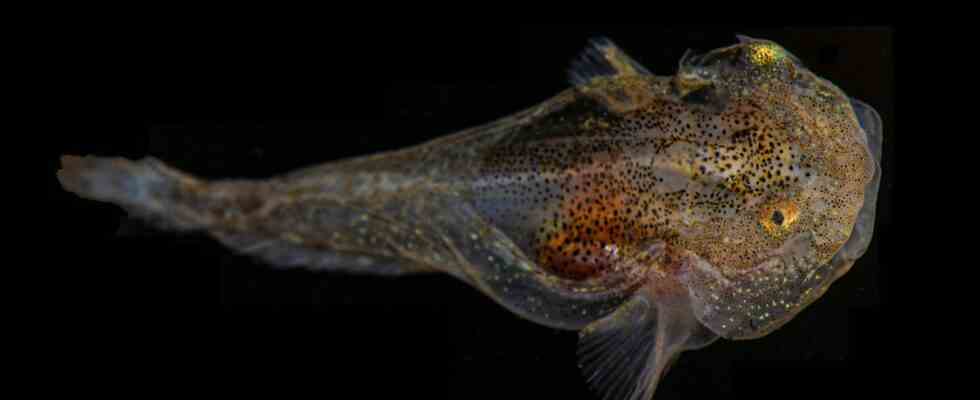They glide through the water like ghosts: these arctic fish shimmer in yellowish-green tones in the dark. The so-called disc bellies of the species Liparis gibbus grow up to 50 centimeters in size and live in the extreme conditions of the Greenland Arctic Ocean. Researchers from the American Natural History Museum in New York and the City University of New York have now discovered how up to 1,000 animals survive in the cold.
On an expedition to East Greenland in 2019, marine biologists John Sparks and David Gruber discovered the glowing juveniles. Biofluorescence has only rarely been observed in arctic fish. According to the researchers, the disc bellies are the only species known to glow in the dark.
By examining the animals more closely, the scientists also found out how they survive in water temperatures of -2 degrees Celsius. While some reptile and insect species freeze and survive in frost, this is not the case with fish. However, the Greenlandic disc bellies have special anti-freeze proteins that ensure that they do not freeze to death.
“Antifreeze in cars prevents the water in the radiator from freezing in cold temperatures. It’s the same with some animals. They have developed an impressive machinery that protects them from freezing. These include antifreeze proteins, which prevent ice crystals from forming in the body,” says David Gruber, a biologist at CUNY’S Baruch College.
Disk bellies are perfectly adapted to extreme conditions. They also live in the deep sea. Some species have been observed at depths of more than 8000 meters. So it is not surprising that the deepest find of a living fish so far was a disc belly. In 2017, a specimen of the species Pseudoliparis swirei was observed in the Mariana Trench at a depth of 8178 meters.
Rising temperatures in the Arctic could pose a threat to Greenland’s disc bellies, US researchers say. Because the fish are perfectly adapted to the cold conditions, changes could therefore be life-threatening for these unique fish.
Source: American Natural History Museum New York

